#› ii. hymns. / ambience.
Explore tagged Tumblr posts
Photo
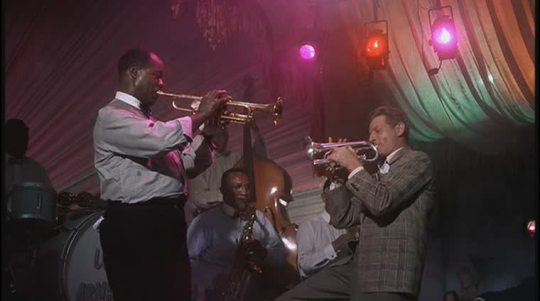
The Five Pennies (1959)
Anyone with a passing interest in American music knows about Louis Armstrong, even superficially. The New Orleans-born cornetist/trumpeter/singer was a central figure of jazz music. His influence on the genre gifted him a popularity not afforded any other black artist in a segregated American popular culture. Armstrong’s renown saw him land numerous film roles – typically playing himself or a jazz band leader – such as Cabin in the Sky (1943); New Orleans (1947); and Hello, Dolly! (1969). He appears as himself, too, in The Five Pennies (1959), a film based on the life of a real-life cornet player. But The Five Pennies concerns not Armstrong, but a white contemporary in Red Nichols. Nichols, played by the effervescent Danny Kaye in this film, might not have been as virtuosic as Armstrong or Bix Beiderbecke, but he was a fine cornetist. For a time in the late 1920s and early ‘30s, he was hailed in Europe as the greatest living jazz cornetist – but only because the records of his African-American counterparts were not yet widely distributed across the Atlantic. Once European jazz fans were more exposed to the numerous black jazz greats, they turned on their regard for Nichols as quickly as they had built it up.
We first find Nichols (Kaye) moving to New York City in the 1920s, hoping to break through in the Big Apple’s thriving jazz scene. In what is probably a dramatization by director Melville Shavelson, Nichols receives that break during a Louis Armstrong show he attends. There, he meets and will later marry Willa Stutsman (Barbara Bel Geddes; in this film, Willa is a singer but was in actuality a dancer). The two are deeply supportive of the other, and will have a daughter named Dorothy (Susan Gordon as a child; Tuesday Weld as a teenager). In New York, Nichols will put together a band that may contain some familiar names to jazz aficionados: himself, pianist Arthur Schutt (Bobby Troup), clarinetist/saxophonist Jimmy Dorsey (Ray Anthony), drummer Dave Tough (Shelly Manne), and trombonist Glenn Miller (Ray Daley). They call themselves the Five Pennies in a sly nod to Nichols’ surname (five pennies equals a nickel), and the quintet tours the United States. At the height of the band’s popularity, Dorothy contracts polio. Nichols, unable to balance the demands of touring with the Five Pennies with the attention his daughter requires, has a crucial decision to make.
Danny Kaye’s comedic and musical abilities are the stuff of legend, in addition to his holding the distinction of being the first Ambassador-at-Large for UNICEF. In The Five Pennies, the audience saw glimpses, for the first time, of Kaye in a more dramatic role. This is not to say there aren’t any signature comedic moments by Kaye – far from it. In the film’s second half as a musical life wears down on Red Nichols, Kaye transforms from a dainty, energetic, and outgoing fellow to someone inhabiting weariness and harboring deep conflicts within his soul, disallowing anyone outside his family to look within. Any such transformation necessitates an actor who can believably and naturally transition between the two halves – and Kaye does just that. His expressive face helps to exaggerate emotion when needed; the studied change in his gait from the film’s first to second halves is something I never expected from him. Those only familiar with Kay’s comedic roles are in for a surprise – a pleasant one – in The Five Pennies.
She never really received top billing in her work nor was she primarily an actress in film, but Barbara Bel Geddes provides ample support for Kaye in this movie. The sincere, not showy, relationship between Willa and Red Nichols always feels authentic. Nichols spends most of the film reveling in his musical life; thus, Willa, as played by Bel Geddes, is responsible for much of the work here. Bel Geddes’ understated performance is wonderful complement to Kaye’s, and it only deepens my wish – when also considering her performance in one of my favorite films, I Remember Mama (1948) – that she starred in more movies alongside her accomplished stage career.
So while The Five Pennies might possess great performances, those performances are also what makes the film tolerable. It runs into trouble with an inert screenplay by Jack Rose and director Melville Shavelson (Rose and Shavelson also wrote 1955’s The Seven Little Foys and 1958’s Houseboat) from a story by Robert Smith (1952’s Invasion, U.S.A., 1953’s 99 River Street). Thus, The Five Pennies is a standard biopic about dreams deferred because of familial love, and it fails to distinguish itself when there is no musical performance on-screen. Too often I found myself wanting the film to hurry up its exposition so that Danny Kaye or Louis Armstrong could perform (Kaye’s cornet and trumpet playing was dubbed over by Red Nichols himself, but Kaye spent months learning the cornet so that he could accurately mimic the correct fingering) the next number. But Rose and Shavelson dedicate sufficient time to pore over Willa’s diagnosis of polio and how it irrevocably changes her life and those of her parents. This could easily have been maudlin, yet Rose and Shavelson provide enough space for this development without too much self-pity or undeserved inspiration.
Whether with or without lyrics, original or adapted material, there is music aplenty in The Five Pennies. Familiar songs such as “When the Saints Go Marching In”, “My Blue Heaven”, and “The Battle Hymn of the Republic” are all given jazzy renditions – and though it might not be as popular as those aforementioned songs, Louis Armstrong’s rendition of “(Won’t You Come Home) Bill Bailey” at the speakeasy in the film’s concluding minutes is a musical highlight. Armstrong, as always, is a joy to watch while in his element. Despite given relatively little to do in The Five Pennies, Armstrong brings the best with the provided material. The moody lighting often employed during the speakeasy and nightclub scenes adds to the unique ambience of the performances. There are a handful of original songs in the film, all composed by the eminent Sylvia Fine (Kaye’s wife, who always tailored her compositions to suit her husband’s singing abilities and musical style). Kaye’s novelty songs are not to everyone’s tastes (certainly not mine), but they are not prominent in The Five Pennies.
“Lullaby in Ragtime” is not even remotely related to ragtime, but it provides Kaye a tender lullaby, the likes of which he excelled in. It is an easygoing, heartwarming tune that boasts beautiful two-voice counterpoint. The film’s title song appears on a sleepless night for young Dorothy – yet another lullaby! Backed by orchestra, it is short, sweet, lovely. However, it is not the last performance of “The Five Pennies”. Do you recall the two-voice counterpoint mentioned earlier this paragraph? Sylvia Fine composes a third lullaby and combines all three lullabies into an incredible rendition of three-voice counterpoint – “Lullaby in Ragtime” (the best of the three), “The Five Pennies”, and Louis Armstrong with “Goodnight – Sleep Tight”. With amateur musicians, this is a difficult musical feat to pull off. And though they were professional actors, it is a great accomplishment to sing this successfully alongside Louis Armstrong: Kaye could not read music (yet Kaye, through observation and close listening, was masterful at internalizing rhythm and expressing his own musicality) and Susan Gordon was no older than ten when this scene was filmed.
youtube
The Five Pennies is one of several jazz musician biopics released during the Hollywood Studio System (see: 1945’s Rhapsody in Blue, 1954’s The Glenn Miller Story, 1956’s The Benny Goodman Story, etc.), but probably one of the least-known. That is almost certainly due to Red Nichols’ obscurity to even casual jazz fans today. Nichols did resume his touring career and revive the Five Pennies – its original members had long departed for their own storied careers – following his service as an industrial worker during World War II. But he never again reached the popular heights that he achieved prior to the mass distribution of jazz records featuring African-Americans performers in Europe. For Louis Armstrong, he remains a highly recognizable, central figure in the genre decades after his passing.
This decent film adaptation of Red Nichols’ life up to that point is perhaps not the best introductory film to Danny Kaye (I would recommend one of his comedies like 1955’s The Court Jester), but it is ideal for his fervent fans and those seeking any depiction of jazz figures in American cinema.
My rating: 7/10
^ Based on my personal imdb rating. Half-points are always rounded down. My interpretation of that ratings system can be found in the “Ratings system” page on my blog (as of July 1, 2020, tumblr is not permitting certain posts with links to appear on tag pages, so I cannot provide the URL).
For more of my reviews tagged “My Movie Odyssey”, check out the tag of the same name on my blog.
#The Five Pennies#Melville Shavelson#Danny Kaye#Barbara Bel Geddes#Louis Armstrong#Harry Guardino#Bobby Troup#Susan Gordon#Tuesday Weld#Sylvia Fine#Robert Smith#Jack Rose#Red Nichols#TCM#My Movie Odyssey
16 notes
·
View notes
Text
HCMJ’s Favorite Albums of 2019!
Listen to a mix featuring these albums here: HCMJ’s 2019 End Of Year Mix
Other Favorites:
David Bruce - The North Wind Was a Woman
galen tipton - fake meat
upusen - Highland Ave.
BLACKPINK - Kill This Love
Starkey - Earth EP
Lamp - ‘A Distant Shore’ Asia Tour 2018
AWITW - She Walk Alone う者姻
Seaketa - Gion ぎおん
SNJO - Diamond
BONNEVILLE - AFFORDABLE LUXURY

20) Gareth Davis & Scanner - Footfalls
I first found the experimental composition/clarinet music of Gareth Davis in the early 2010′s during my initial dive into the Miasmah catalog. Teamed up here with another electronic musician/clarinetist, Footfalls uses long, poetic waves of deep woodwinds and synth improv to describe hauntingly desolate environments. It only seems fitting to start the list with one of many bookends on a decade in the grim, cold grey of Philadelphia.
BANDCAMP | APPLE MUSIC | SPOTIFY
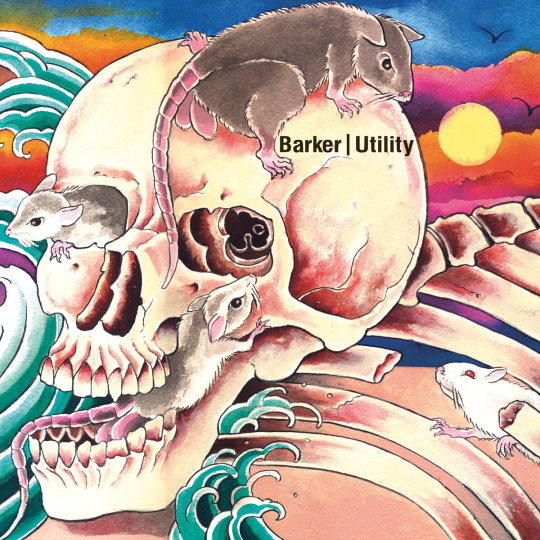
19) Barker - Utility
Arp and delay-driven rhythmic expression that recalls late-era Kraftwerk, building a pristine sci-fi future with ear-pleasing, rich, and laser-sharp production. Like disembodied trance or house music searching for a strong beat that never comes, Utility is absolute, skillfully-stated synth pleasure.
BANDCAMP | APPLE MUSIC | SPOTIFY

18) Sean McCann/Seth Graham w/Kymatic Ensemble - Split Series Vol. IV
Seth Graham’s Gasp was a big favorite in 2018, here condensed and re-imagined for chamber ensemble. Sean McCann’s “Vilon” finds a blissful middle-ground between electronic ambient music and traditional western instrumentation, like a poignant hymn sung somewhere far away, while the new “Gasp” arrangements are full of expressiveness and surprises.
BANDCAMP

17) 猫 シ Corp. & t e l e p a t h - Building a Better World
Deep bass pulses and distant rain welcome us to a familiar comfortable place, but as the unmistakable sound and melodic freedom of telepath’s original synth work bends its way over rolling toms in the reverb-soaked hifi opener, it becomes clear that this album is something new and special. Full-on new age drenched in an endless downpour, it’s a huge and beautiful world that’s blissful to be lost in.
BANDCAMP | APPLE MUSIC | SPOTIFY
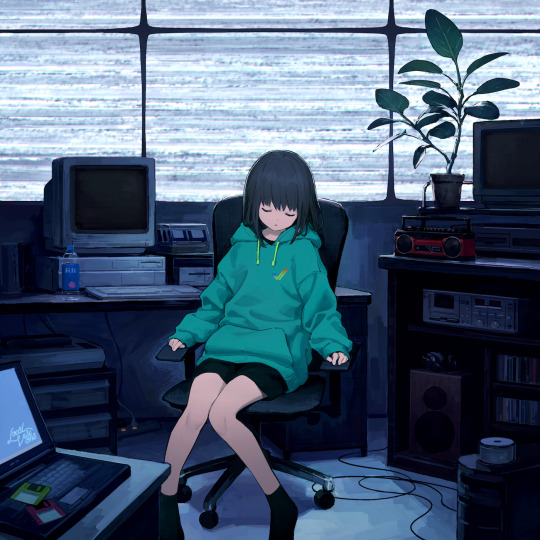
16) Various Artists - Oneironaut
Another rare case of a compilation that is actually worth listening to, Japanese indie powerhouse Local Visions assembles the best talent from the sax-loving, jazz-infused, post-vaporwave electronic underworld of Japan and beyond in the indomitable Oneironaut comp. Notable contributions from Utsuro Spark, upusen, Tsudio Studio, tamao ninomiya, and countless others deliver a hazy daydream.
BANDCAMP
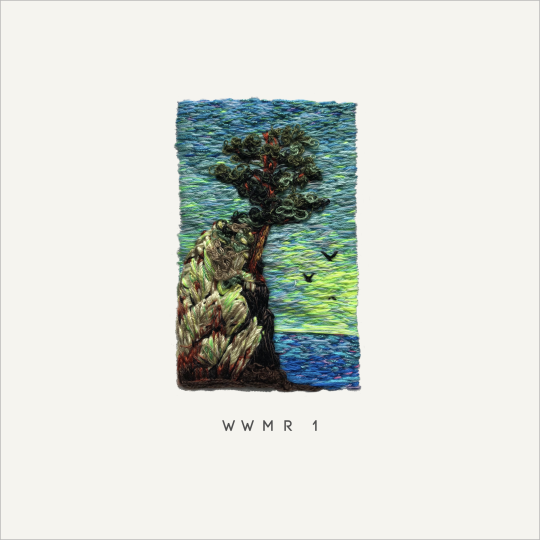
15) wai wai music resort - WWMR 1
Also from Local Visions comes this special collection of tracks caught somewhere between “lost LP found in a record crate” and “bedroom 4-track” - two distinct lofi flavors that mysteriously meld seamlessly on WWMR 1. It sounds new and old, youthful and mature, and full of affection for love and the music it references.
BANDCAMP | SPOTIFY

14) EXID - Me & You
There’s something about this mini-album, a Christmas time snowy nostalgia as the sun sets on another chapter of life (and era of kpop) in tracks like “나의밤” and “WE ARE..,” the Jamiroquai funk of “내일해 (Urban Mix),” or club igniting title track - EXID may never exist in this form or at this level again, and like so many of my favorites this year it reflects the recent history of its genre brilliantly.
APPLE MUSIC | SPOTIFY
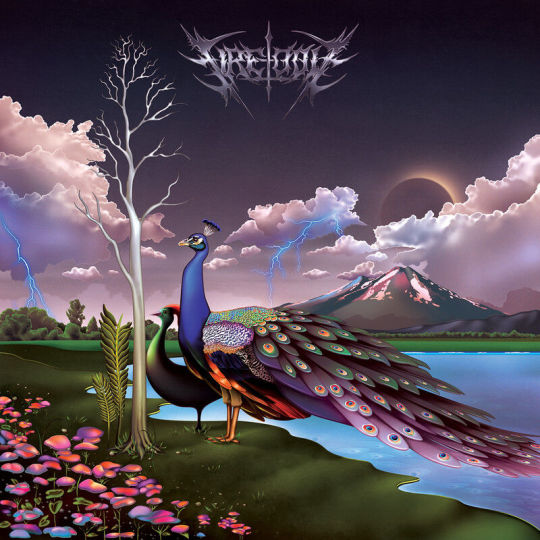
13) Fire-Toolz - Field Whispers (Into the Crystal Palace)
Field Whispers is the stunning next step in the evolution of Fire-Toolz that feels completely at home on the finely-curated Orange Milk. Extended sax-soaked dreams collide with splinters of music jumbled and broken, elegant and disjointed, all bouncing off each other while still leaving room for moments of soaring guitar and dreamy synth pads.
BANDCAMP | APPLE MUSIC | SPOTIFY
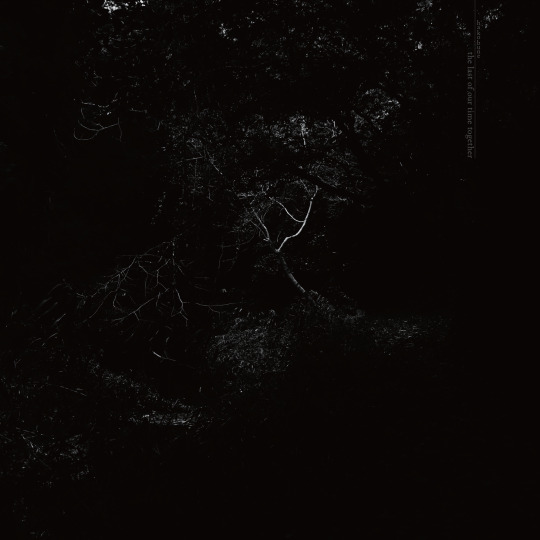
12) Hakobune - The Last of Our Time Together
With over 50 releases (4 just this year!), Hakobune’s discography can seem like an impenetrable wall of ambience, but like classics Seamless and Here and Love Knows Where, The Last of Our Time Together stands out - monumental and multi-dimensional - a slow dance skidding along the frozen surface of an endlessly deep, rich sea of emotion.
BANDCAMP | APPLE MUSIC | SPOTIFY

11) FM Skyline - Advanced Memory Suite
As nostalgic electronic music continues to evolve and find itself elevated in the hands of increasingly-focused musicians, FM Skyline delivers a joyful retrospective on a decade that gave new life to so many old sounds. Exploring the inner recesses of our memory and delusion, Advanced Memory Suite turns the page on a decade of chillwave/synthwave/vaporwave/whateverwave. It’s a hypnotic monument to the modern renaissance.
BANDCAMP | APPLE MUSIC | SPOTIFY
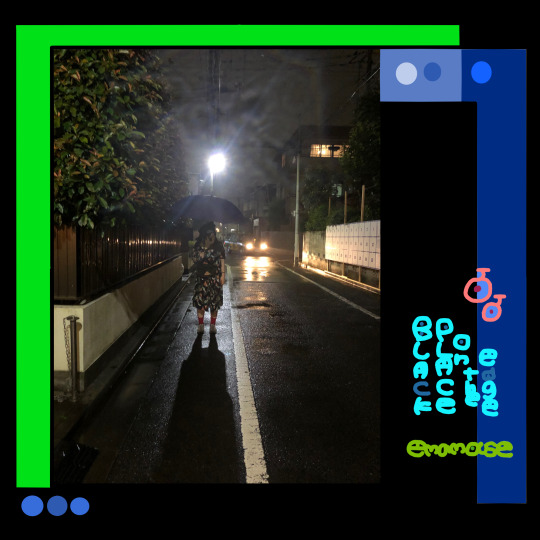
10) emamouse - Black place on the edge
It was a huge year from the prolific Tokyo-based visual artist and musician emamouse, whose non-stop creative output continues to challenge the very nature of reality. Black place on the edge was a standout favorite this year, layered and mysterious - incidental music for the surreal dreamworld described in mou’s most unnerving illustrations. Like waking up and finding yourself trapped inside Quest 64.
BANDCAMP
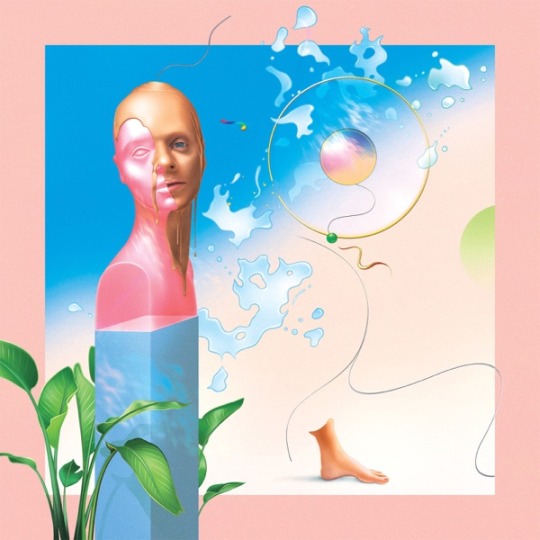
09) Koeosaeme - Obanikeshi
My favorite Orange Milk release of the year, Koeosaeme delivers another absolute hurricane of hyper-detailed, sensory-extreme, buckshot-to-the-face arrangements. The sheer amount of data on this album is staggering, with more musical information packed into a few minutes of its blissful chaos than most full length albums combined.
BANDCAMP | APPLE MUSIC | SPOTIFY

08) Jaeho Hwang - Non-self 비자아
I was super fortunate to play a show with Jaeho Hwang in Tokyo during this year’s Neo Gaia Phantasy tour - his immense set started so intensely it’s as if the entire room was cast under a shamanistic spell, hypnotized by percussive expressionism, drawn to the light of digitally melting faces and occult rituals playing out on the screen behind him. Non-self 비자아 is without mercy and full of powerful and primal energy.
BANDCAMP | APPLE MUSIC | SPOTIFY
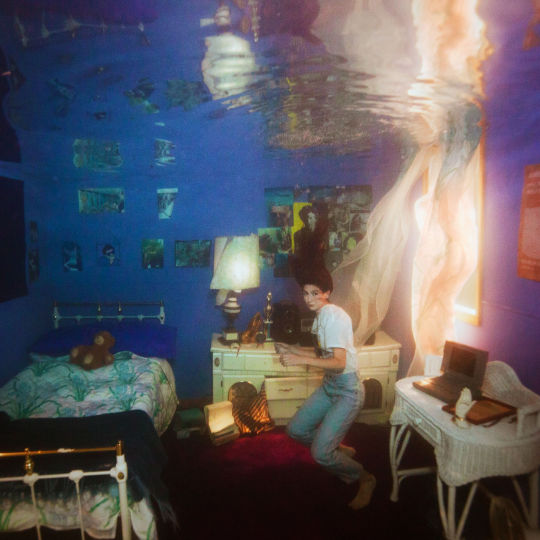
07) Weyes Blood - Titanic Rising
Natalie Mering’s subtly expressive, velvety voice on its own is enough to make anything she touches turn to gold, but her songwriting is so masterfully dialed in on Titanic Rising it’s as if Harry Nilsson came back from the dead to write a new volume of pop rock ballads to get us through the next 50 years. It’s an album dripping with love for all the best parts of the 1970′s (Stardust-era Willie Nelson, early ELO, “Lost Weekend” Lennon and friends, etc), but also showcases the compositional chops to match and sometimes surpass its musical lineage (e.g. “Picture Me Better”).
BANDCAMP | APPLE MUSIC | SPOTIFY

06) Monari Wakita - RIGHT HERE
Off the heals of last year’s jaw-dropping Ahead!, ex-Especia Monari Wakita continues to defy modern conventions while asserting herself as one of the most powerful female voices in jpop. “エスパドリーユでつかまえて” sounds like Hitomitoi when she was a rising star, FRIEND IN NEED continues the new jack swing flirting, “やさしい嘘” sounds like it’s begging to be sampled by a future funk artist, and the lead-off single “Just a Crush for Today” is somewhere in a stop-and-go freefall between Billy Joel and Sonic R.
VIDEO 1 | VIDEO 2

05) Yeule - Serotonin II
Beneath the subtle power and diffusion of a voice like an extra-dimensional Julee Cruise, Serotonin II’s beautifully bleak paintings of the world it carefully constructs are reflective of Yeule’s transcendence into the artist’s next form. Crumbling brutalism under a blinding white sky, aliens in a graveyard - the romance of eternal torment in the spiral - all in dark room illuminated by a computer monitor sometime in the 00′s.
BANDCAMP | APPLE MUSIC | SPOTIFY
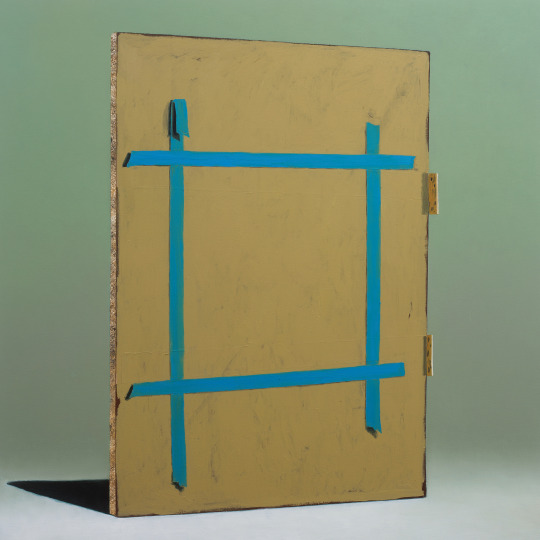
04) The Caretaker - Everywhere at the End of Time - Stage 6
The final release for this multi-year project, capturing a mind being lost to dementia, also marks the end of Leyland Kirby’s multi-decade spanning Caretaker project - a project that has had an immense impact on my perception of the limitlessness of music. Now completed, Everywhere at the End of Time towers as a 50 track, 6.5 hour journey from dreamy lucidity to terrifying confusion and darkness.
BANDCAMP

03) Tsudio Studio - Soda Resort Journey
Tsudio Studio brings a contemporary frame to leisure fantasy. Instant classics “Kiss in KIX,” “Asian Coke Light,” and “Like a Ruin” expand on the electro-bossa pop of Port Island, while surprises like “Beijing Cat” expand and explore new worlds of sound. One perfect chord after another, from start to finish, Soda Resort Journey is bubbly and delicious to listen to. Play it looped, close your eyes, be where you’d rather be.
BANDCAMP | APPLE MUSIC | SPOTIFY

02) Minuano - Butterfly Dream
Lamp vocalist Kaori Sakakibara’s side project Minuano is like some mutant variant of Lamp - equally complex while slightly less disorienting arrangements (although there are a few re-worked Lamp classics on here), tighter pop sound, stunningly immaculate vocal production - all while maintaining the unique orchestral jazz pop that makes both bands such a euphoric joy to listen to. “Memory of Soda Pop” was my favorite track released by anyone this year.
BANDCAMP
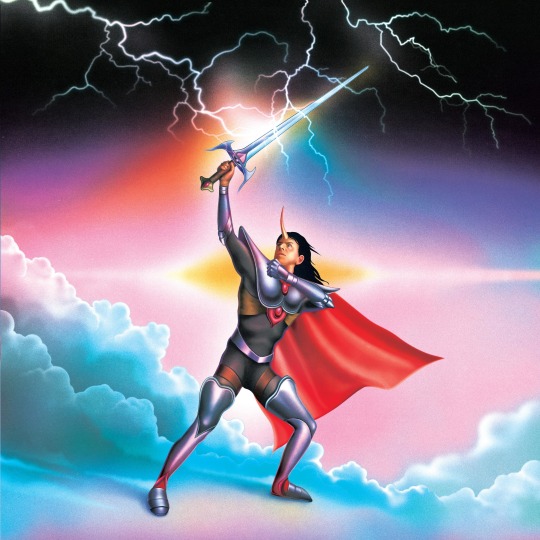
01) EQUIP - CURSEBREAKER X
This was the year of EQUIP. No better story for this year, no better sound than CURSEBREAKER X - the songs from this album will always bring back a thousand memories of smoke-filled clubs, dark forests, and snow-capped mountains from across Japan - the building promise of absolute freedom and a happier tomorrow as we all lived the Neo Gaia Phantasy.. But even without my personal connection to the music, the hardware-driven “perfect sound” VGM and EQUIP’s signature cassette tape destruction has never been better balanced than it is here - it’s loud, and filled with unforgettable melodies and unknown lands. It’s monumental and iconic and will stand the test of time and it was my favorite album of 2019!
BANDCAMP | APPLE MUSIC | SPOTIFY
12 notes
·
View notes
Video
@EdithMaafo unveils 'Lead Me Lord' music video Edith Maafo put a spin on her classic song, "Lead Me Lord," with a music video released today. The modern gospel hymn was released in August last year on her debut ‘Bigger Better Greater’, album which is still riding a wave of unfaltering success. YouTube link : https://youtu.be/21Rtji9T6J0 Lead me Lord, an appropriate supplication song for beginning of the year is a cry to God to lead and guide our steps. The video premiered on her YouTube Channel with a live fan Q&A leading up to the video’s morning premiere. It also premiered on Ghana's leading Christian channel, Praise TV afterwards. The Kofi Awuah II - directed video captures Edith behind a beautiful classic white grand piano with dimmed lighting and a superb ambience before she’s teleported to the centre of unquestionably Ghana’s most elegant Cathedral, the Holy Spirt Cathedral. The classic bell pendant lighting, medieval pipe organs and stained glass windows give this video an ambience to behold and captures the essence of the Song. Many would love this video. Social media Twitter:@EdithMaafo Facebook: Edith Maafo Instagram:EdithMaafo #EdithMaafo #ChristianMusic #GospelMusic #AfricanGospel #GospelSong #AfricanMusic #Jonilar #TrendingNow https://www.instagram.com/p/B7JgCxFltca/?igshid=10lttejmrinyf
0 notes